Espresso machines for the home have come a long way in recent years. Today’s machines let you pull cafe-quality shots, froth milk for lattes and cappuccinos and even grind fresh beans – all on your kitchen counter. To help you choose a machine that suits your budget and style, we’ve researched a wide range of models and pulled together detailed notes about each one. Every description below is written in plain English and draws on evidence from official manuals and product pages. Estimated prices are given to help you compare value (actual prices vary by retailer and market). Links to official or authorized sites are provided for further reading.
Semi-automatic, manual, and hybrid machines for home usage
Breville Bambino® Plus – compact powerhouse (≈ US$500)
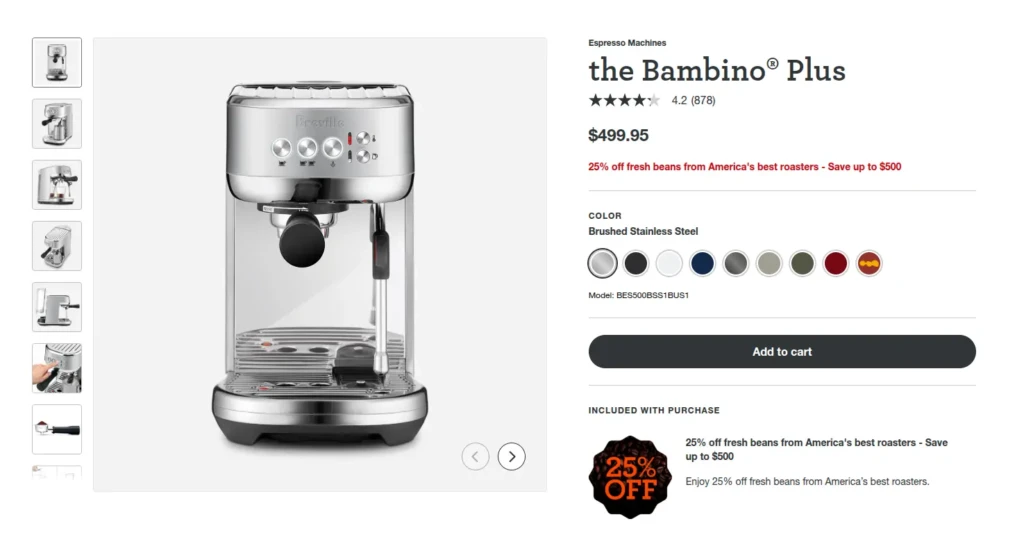
Breville designed the Bambino Plus for people who want great espresso without a bulky machine. Its ThermoJet heating system heats water to brewing temperature in about 3 seconds and uses less energy than conventional boilers.
A 54 mm stainless-steel portafilter holds a generous 18 g of coffee, helping to create a full-bodied shot.
The Bambino Plus also includes a low-pressure pre-infusion followed by a 9-bar extraction from a 15-bar pump to ensure the shot develops a rich crema. Once your espresso is ready, the automatic steam wand produces silky microfoam; you can choose automatic or manual steaming, and the wand reaches about 266 °F (130 °C) for quick milk texturing.
A simple interface lets you select single or double shots, and the machine’s compact footprint fits neatly on small counters.
Read more https://www.breville.com/en-us/product/bes500
Gaggia Classic Pro – sturdy Italian workhorse (≈ US$550)
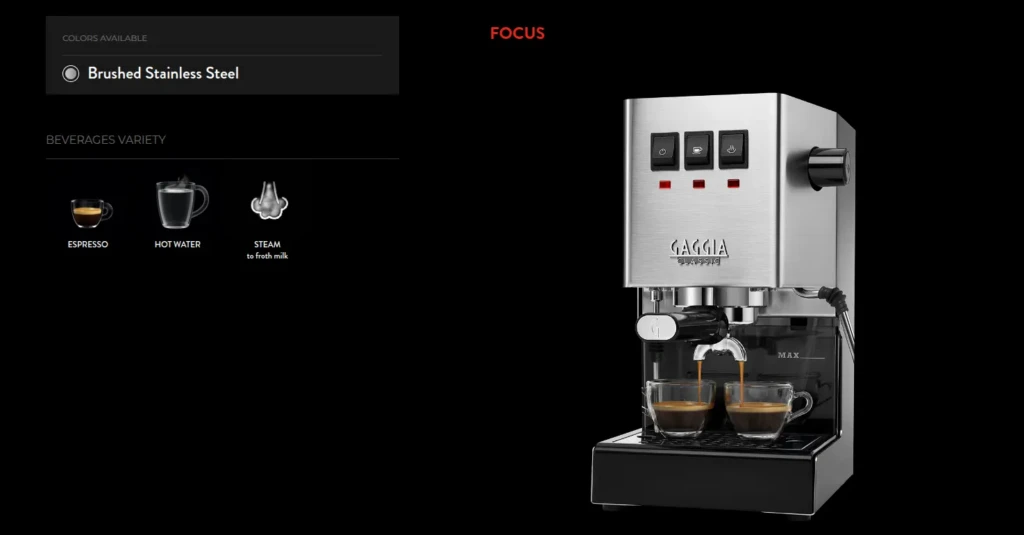
The Gaggia Classic Pro is a modern re-issue of one of the first home espresso machines. Built in Italy, it has a solid, lead-free brass boiler that improves thermal stability and steaming performance.
A 9-bar pump delivers the pressure you need for espresso, and a commercial two-hole steam wand allows you to stretch milk and create micro-foam for latte art. The interface is intentionally basic – just three rocker switches for power, brew and steam – which makes it easy to operate and service. Its exterior is brushed stainless steel and you get a 58-mm commercial portafilter for cafe-style extractions.
Gaggia sells the Classic Pro in stainless for about US$549, with coloured panels costing slightly more.
Read more https://www.gaggia.com/manual-machines/new-classic/
Rancilio Silvia – heavy-duty classic (≈ US$995)
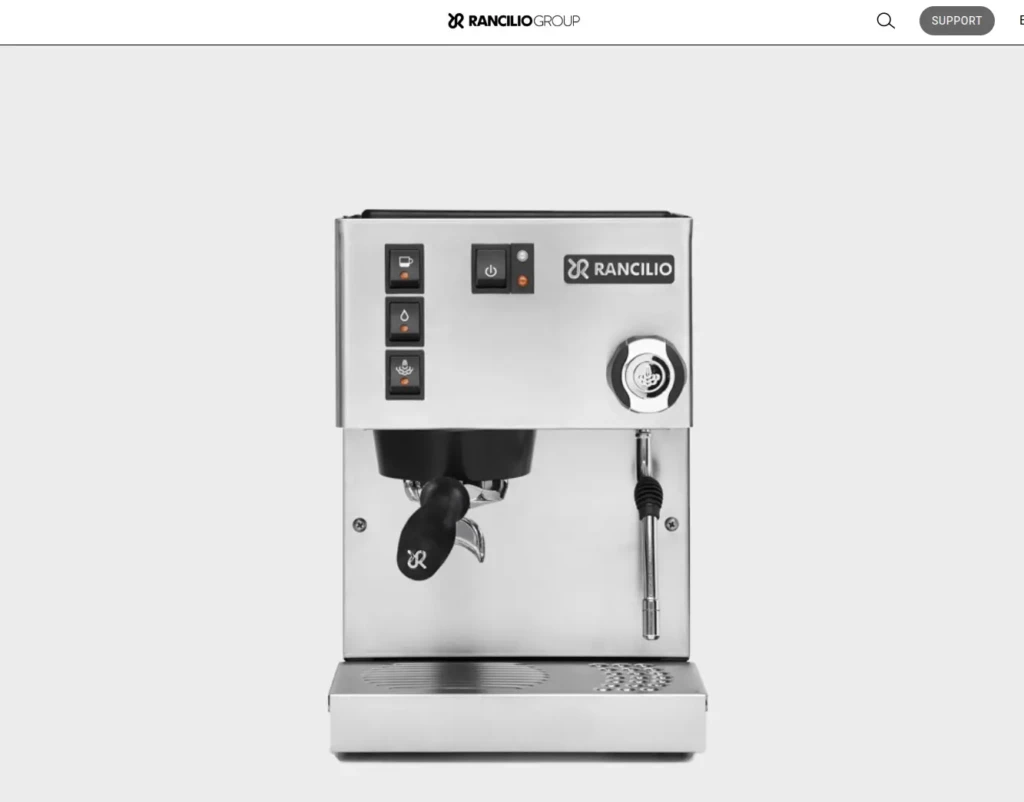
Rancilio’s Silvia has been called the workhorse of home espresso. The machine features a stainless-steel housing, an insulated brass boiler and a brass brew group for temperature stability.
It uses a commercial-grade, insulated boiler to conserve energy and maintain pressure, and comes with a professional 58-mm portafilter plus single and double baskets.
The Silvia also has a full-size stainless-steel steam wand for frothing milk. Since it’s a single-boiler machine you must switch between brewing and steaming, but the simple mechanical design makes the Silvia easy to maintain and extremely durable. Specialty retailer Clive Coffee lists the Silvia at US$995 and notes its reputation for longevity.
Read more https://www.ranciliogroup.com/rancilio/silvia/
De’Longhi Dedica Deluxe (EC685M) – slim and user-friendly (≈ US$350)

If you’re tight on space or budget, the Dedica Deluxe offers a slim profile without sacrificing features. According to the manual, it uses a 15-bar pump for espresso and a Thermoblock heating system that heats quickly.
There’s a Rapid Cappuccino System and an adjustable frother so you can choose between foam and hot milk. The double drip tray accommodates tall cups, and the top acts as a cup warmer.
A built-in energy-saving mode, descaling alarm and removable 35-oz (≈ 1 L) water tank make maintenance straightforward. The Dedica Deluxe sells for roughly US$300-350 depending on finish and retailer.
Read more https://www.delonghi.com/en-us/s/EC685M
Wacaco Nanopresso – espresso in your palm (≈ US$65)
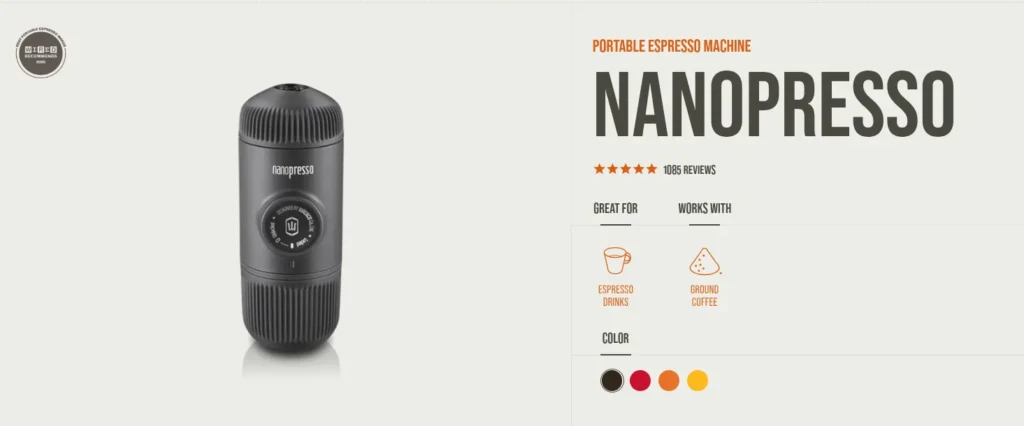
For travellers and campers, the Nanopresso is an impressive pocket-sized machine. Wacaco’s patented piston builds up to 18 bars of pressure using just your hands.
The design requires 15 % less force than the company’s earlier Minipresso, making it easier to pump.
The brewing head detaches for deep cleaning, and at just over 6 inches long it stows easily in a backpack or suitcase. Note that the Nanopresso does not heat water; you must supply hot water to make espresso. On Wacaco’s site it retails for about US$64.90.
Read more https://wacaco.com/
Rocket Espresso Appartamento – boutique compact (≈ US$1,700-2,000)
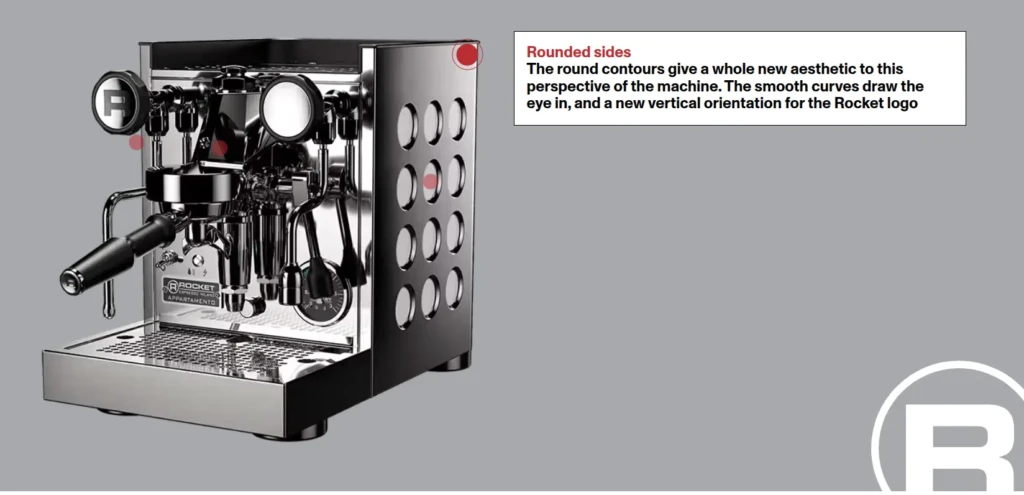
The Appartamento by Rocket Espresso is hand-assembled in Milan. Its signature feature is the compact chassis, which is smaller than most heat-exchanger machines yet still houses a 1.8-litre copper boiler with heat-exchanger technology.
The machine has a vibratory pump and pulls water from an internal reservoir (it isn’t plumbable). Despite its small footprint, it weighs about 20 kg, reflecting the solid stainless-steel panels and brass components.
You get professional E61-style brewing with the convenience of a removable water tank. Rocket does not publish a price on its site, but retailers typically sell the Appartamento for around US$1,800.
Read more https://rocket-espresso.com/products/domestic-models/appartamento
Flair Pro 2 manual espresso maker – full control (≈ US$325)
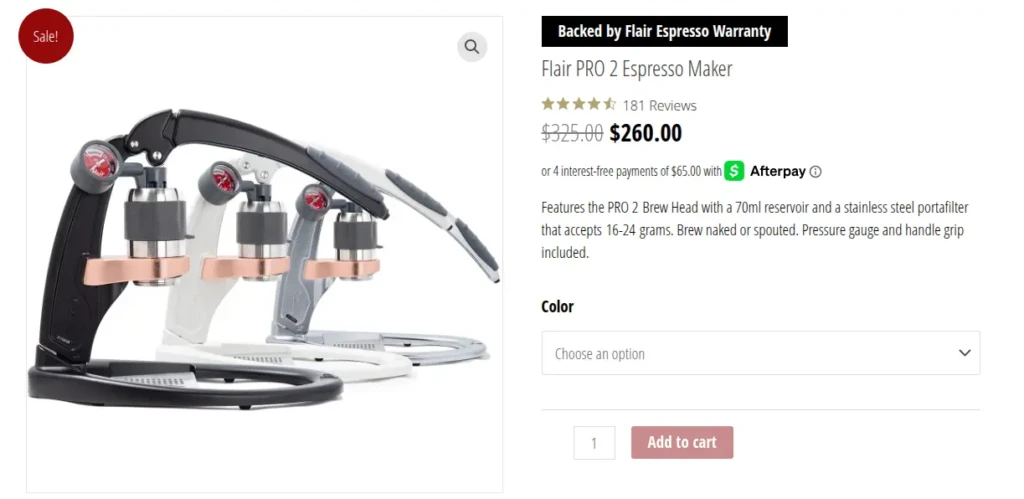
Manual espresso makers are a different experience because they rely on your strength and technique. The Flair Pro 2 is completely human-powered; to pull a shot you add up to 24 g of coffee and 70 ml of hot water, then press a lever to extract a 56 ml shot with crema.
The Pro 2 has a custom pressure gauge showing an “espresso zone” between 6-9 bar, giving you feedback while pulling a shot. Upgrades over earlier models include a stainless-steel spout, an all-stainless bottomless portafilter with improved flow, and a silicone lever grip for comfort.
The brew head detaches completely, which makes it easy to rinse under cold water and pack into the included carrying case. Because there are no electronics or pumps, the Flair Pro 2 is ideal for travel and for people who want hands-on brewing. It sells for around US$325 on specialty sites.
Read more https://flairespresso.com/
Calphalon Temp iQ Espresso Machine with Steam Wand – value and control (≈ US$350)

This machine offers several features usually found on pricier equipment. Calphalon’s product page explains that the Temp iQ system uses thermoblock heating technology with PID temperature control to heat water evenly; it combines a pre-infusion step to bloom the grounds before extraction.
A 15-bar Italian pump delivers espresso at the touch of a button, and a 58 mm portafilter ensures even water dispersion and robust flavour. The machine includes a steam wand capable of making creamy micro-foam milk and a cup-warmer on top for preheating your cups.
It also comes with useful accessories: a stainless-steel milk jug, tamper, cleaning disc and cleaning pin. At the time of writing the Calphalon Temp iQ sells for US$349.99 on Calphalon’s website.
Read more https://www.calphalon.com/
Conclusion
Choosing the best home espresso machine depends on how hands-on you want to be and how much you’re willing to spend. Manual machines like the Flair Pro 2 offer unmatched control and portability but require skill. Semi-automatic machines such as the Breville Bambino Plus or Gaggia Classic Pro balance convenience with craft. Integrated-grinder machines like the Barista Express simplify workflow by grinding and dosing for you. Super-automatics, exemplified by the Philips 3200 LatteGo and Jura E8, handle every step from grinding to milk frothing, trading away some control for ease and consistency. Portable units like the Wacaco Nanopresso prioritise convenience and speed. Whatever your choice, each machine above is backed by evidence from product manuals or official pages, giving you confidence that your investment will produce satisfying espresso at home.
Note: If you want to suggest another coffee machine for the office or home, please contact us! We’d love to hear about the best tools for brewing coffee.
